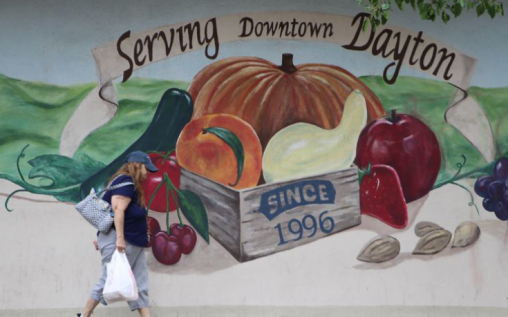Excerpt
 From wine to eggs, haircuts to rent, vet services to energy costs, consumers in the Dayton region have been getting squeezed by higher prices nearly everywhere they turn, according to new price survey data for U.S. urban areas.
From wine to eggs, haircuts to rent, vet services to energy costs, consumers in the Dayton region have been getting squeezed by higher prices nearly everywhere they turn, according to new price survey data for U.S. urban areas.
In the first quarter of this year, the Dayton metro area saw year-over-year price increases in three-fourths of the products and services that were surveyed by the Cost of Living Index, which is published by the Council for Community and Economic Research.
Some local residents say they are decreasing spending where they can and altering shopping routines to cope with higher prices.
“I’ve had to cut back spending, reevaluate budgets and give up some of the things that I enjoy — or do a lot less of them — especially driving,” said Melissa Schubert, 37, of Dayton. “Everything — everything — is going up, it’s not just one place … it’s across the board.”
With U.S. inflation up 8.6% in May compared to a year earlier, some of the biggest price increases nationally were for shelter, airline fares, and new and used vehicles, the the U.S. Bureau of Labor Statistics said. Medical care, household furnishings, recreation and apparel costs also jumped up.
On a more local level, the Council for Community and Economic Research recently released its Cost of Living Index for the first quarter of 2022. The index surveys the prices of food, housing, utilities, transportation, health care and miscellaneous goods and services in more than 260 U.S. urban areas. Data from the index is published quarterly.
For the Dayton metro area, in the first quarter of 2022, prices increased in 46 of 60 surveyed categories of goods and services, compared to Q1 of 2021. In the previous 12 month period (2020 to 2021) prices had increased in just 24 of those 60 expenditure categories.
Products that saw some of the largest price hikes in the Dayton metro area included wine, eggs, boy’s jeans and potato chips, with some of those prices doubling.
Year-over-year, rent soared 56% and gas prices rose 39% (even before the recent spikes). Dry cleaning, beauty salon services, home prices and doctor and dentist visits also increased, according to the index.
U.S. wine prices may have shot up because bottles have become more expensive to make and can be expensive to transport, according to some industry and news reports.
Rents have risen at the fastest pace in decades, according to some studies, and some local businesses have raised prices to address increased costs, while others are struggling to remain profitable.
Miamisburg diner Rye Toast recently announced it is closing and blamed its closure on the increased cost of goods.

Kevin Willardsen, Ph.D.
When inflation increases, people’s purchasing power decreases, and consumers typically adjust by reducing spending and holding off on larger-ticket items like new cars, vacations and new housing, said Kevin Willardsen, an associate professor of economics at Wright State University.
High and rising prices also tend to result in many people decreasing or eliminating spending on little “luxuries” and nonessential entertainment items such as subscriptions to streaming services, Willardsen said.
Netflix lost subscribers following a price hike, and some observers believe that suggests consumers are starting to react and modify their spending because of inflation. Other companies have blamed slowing sales growth on rising costs and prices.
“It’s little things like that you’ll cut out of your budget, because you can’t cut out gas, you can’t cut out food, you can’t cut out rent — and all of those things are increasing considerably,” Willardsen said.
Wages have been increasing, and low-income earners have benefitted more than some higher-income workers, Willardsen said, but unfortunately in many cases the gains are being wiped out by higher prices.
Schubert, the Dayton resident, said she is cutting back spending on clothes and entertainment, like going out to dinner or drinks with friends.
She said she has tried to reduce spending on “wants” because she can’t do very much about the spending she must do on “needs.”
But Schubert also said she tries to “cut corners” when grocery shopping, and she is trying to limit car trips because it recently cost $120 to fill up her gas tank.
“I am basing my menu and meals and cooking based solely on what’s on sale,” she said, adding that if prices continue to climb, “I guess I’m going to eat a lot of Ramen noodles.”
Read the entire story at daytondailynews.com

 Milling around
Milling around  Wright State recognizes Nursing Professor Kim Ringo for advancing international student success
Wright State recognizes Nursing Professor Kim Ringo for advancing international student success  Wright State honors graduating students for distinguished doctoral dissertations
Wright State honors graduating students for distinguished doctoral dissertations  Top 10 Newsroom videos of 2025
Top 10 Newsroom videos of 2025  Museum-quality replica of historic Hawthorn Hill donated to Wright State
Museum-quality replica of historic Hawthorn Hill donated to Wright State 